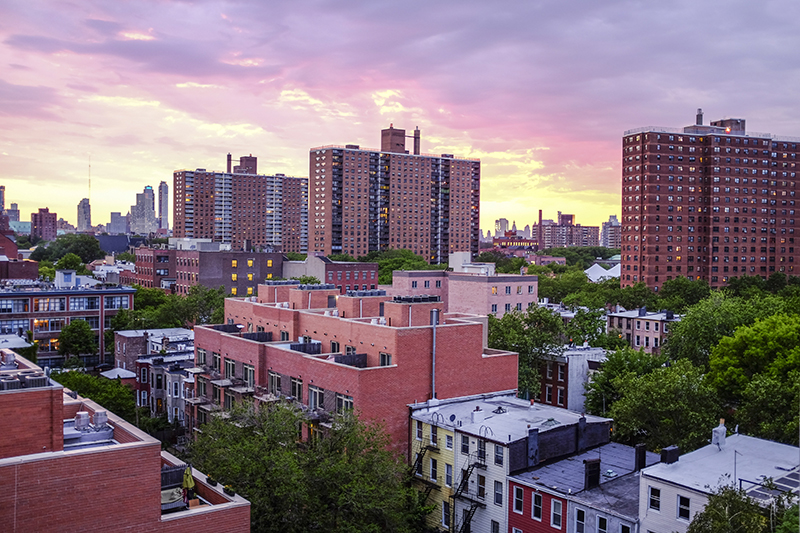Small Multifamily Inventory Growing Fastest in New York City’s Outer Boroughs

- New York City’s existing small multifamily inventory mostly consists of older, pre-war buildings, while large apartment buildings tend to be newer.
- The city's outer boroughs have had the highest concentration of newer small multifamily additions.
- Large multifamily developers are looking beyond Manhattan for new apartment projects.
Pre-War Buildings Dominate the City’s Multifamily Inventory
Picking up from our recent blog post, we dig deeper into borough-level trends of New York City’s multifamily market. Here we take a closer look at the age characteristics of its existing large and small multifamily rental inventory.
Most of the city’s current multifamily rental base came online before the 1980s. But recent additions to this inventory display differences across asset class.
Around 87% of the city’s approximately 820,000 existing small multifamily units were constructed before the ’80s. About 61% of those units were built before the ’50s. Of the remaining small apartment units, 7% were completed in the ‘80s, 4% in the ‘90s, and just 2% since 2010.
For large multifamily, 80% of the total existing inventory (780,000 units) was constructed before the ‘80s. Nearly 42% came online between 1950 and 1979, coinciding with the heyday of public housing in the city. The share of properties built since 1980 is considerably higher for large multifamily, at 20%, with more than half of that coming online since 2000.
Recent Construction Spreading to Outer Boroughs
At the borough-level, Manhattan has historically captured a significant share of large apartment inventory across construction vintage. On the other hand, small multifamily has been more evenly distributed. In the outer boroughs, small multifamily’s share has expanded significantly for inventory built after 2000.
Brooklyn has become the epicenter for newer additions to the city’s existing small multifamily supply over the past two decades. The borough captured about 42% of units built since 2000. The Bronx has also attracted small multifamily development in recent years. It has increased its share of new units built from 18% in the 2000-2009 period to 30% from 2010 to 2017.
While Manhattan has maintained its dominant share of large multifamily units across age bands, its share of newer existing inventory across the city has dropped significantly. New additions accounted for a 31% share from 2010 to 2017, down from a 61% percent share of units build between 2000 and 2009. Manhattan’s decline is offset by increasing outer borough shares of newer units within the city’s existing inventory.
The above trends speak to the historical effects of construction density. Land use regulation and property location are continuously pushing smaller developers farther away from Manhattan’s dense urban core. Going forward, small property developers will likely continue to find more consistent opportunities in the outer boroughs.
For more multifamily research and insights, visit our research page.
Note: All data is sourced from the American Community Survey (ACS), unless otherwise stated. ACS statistics are sample-based estimates of the compositional profile of the total population in the given year of data collection, and include a margin of error.

